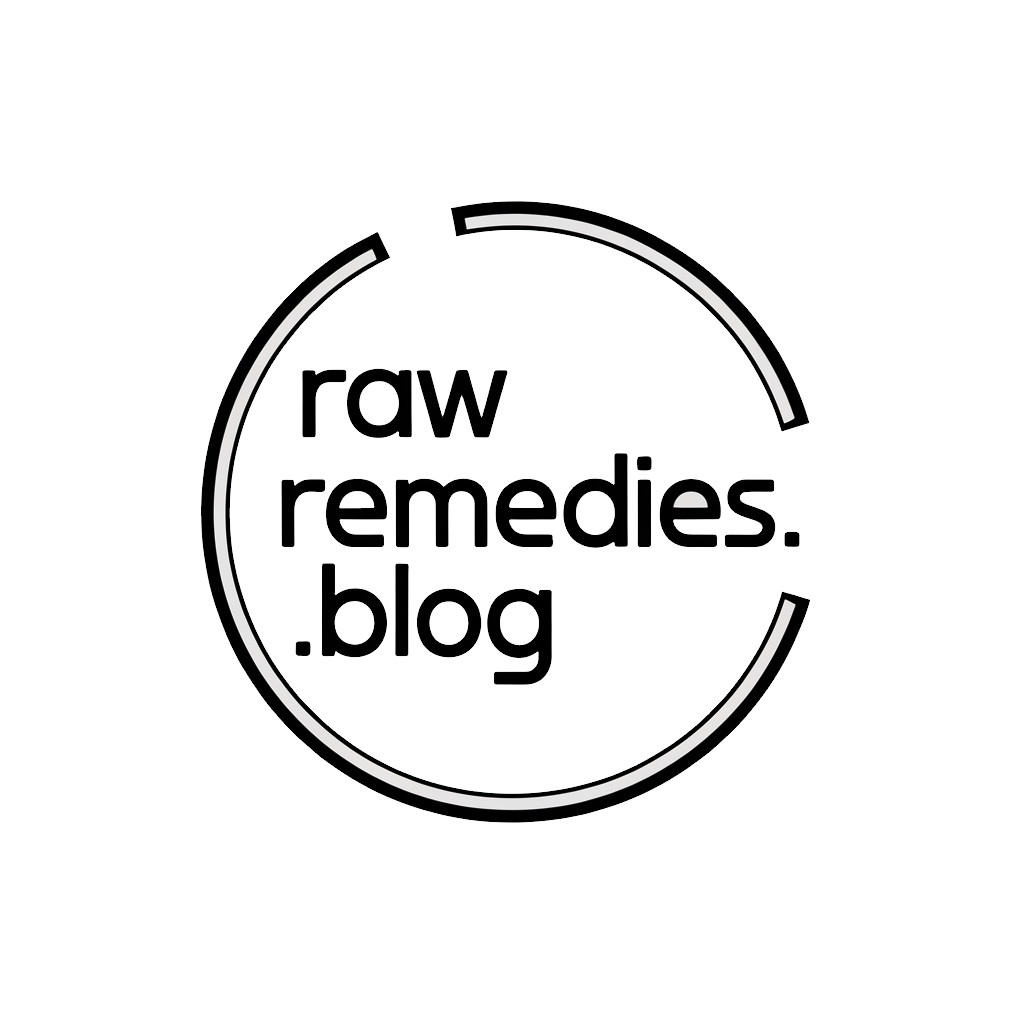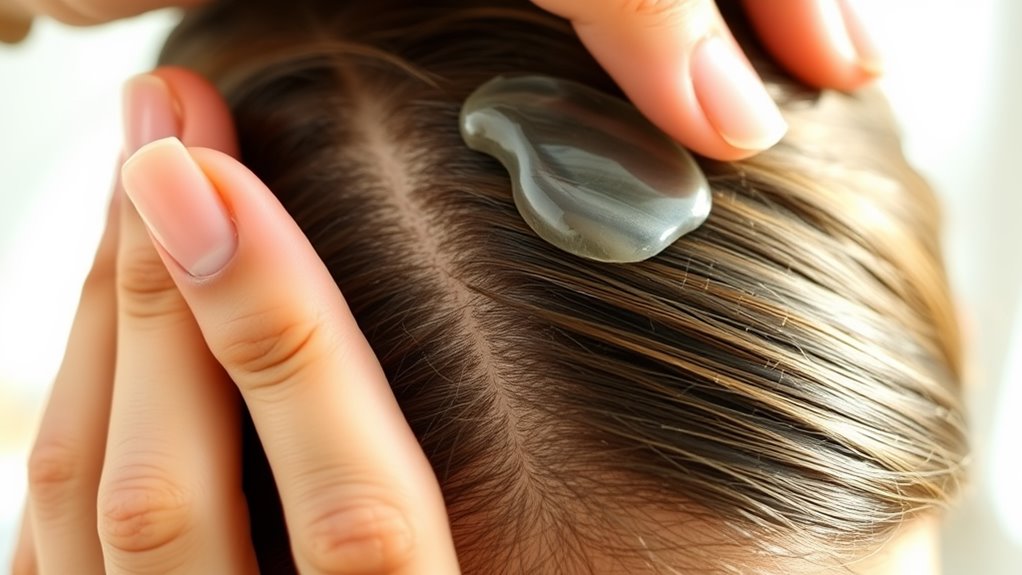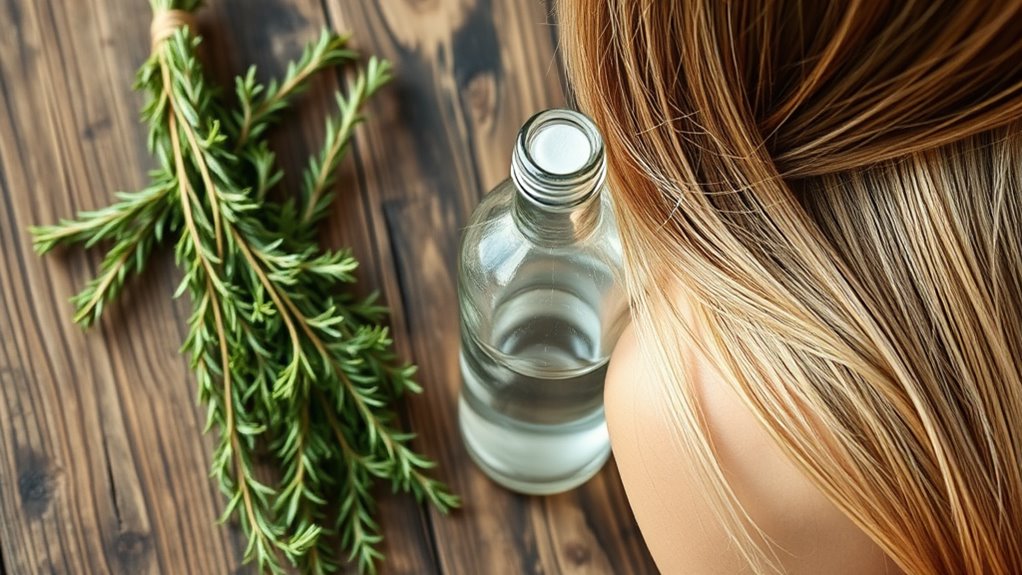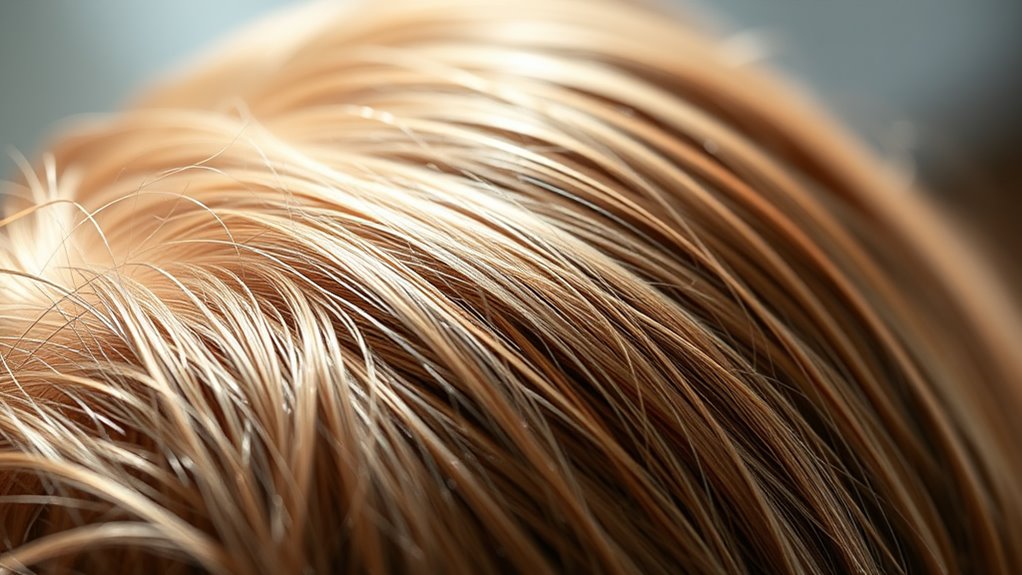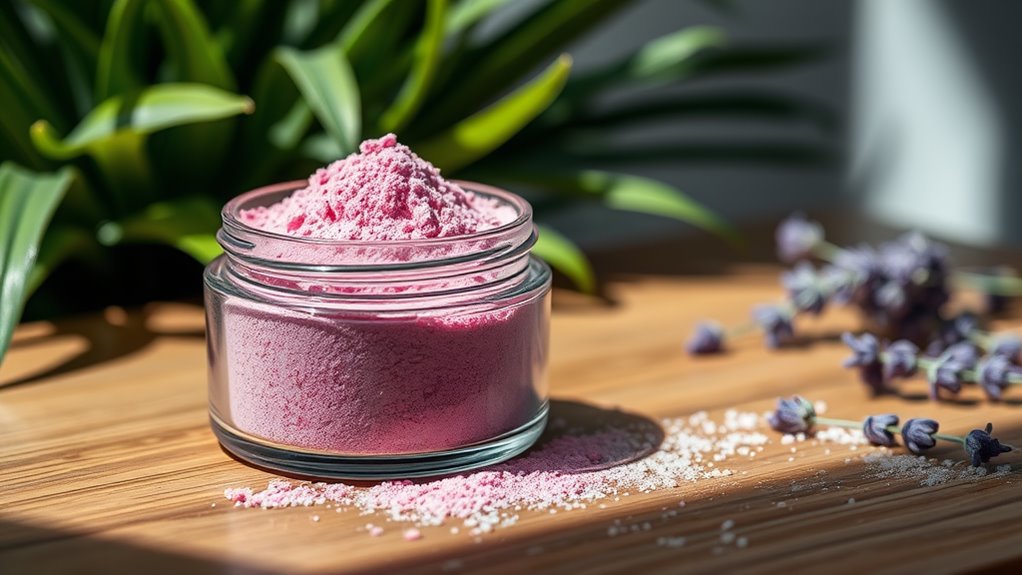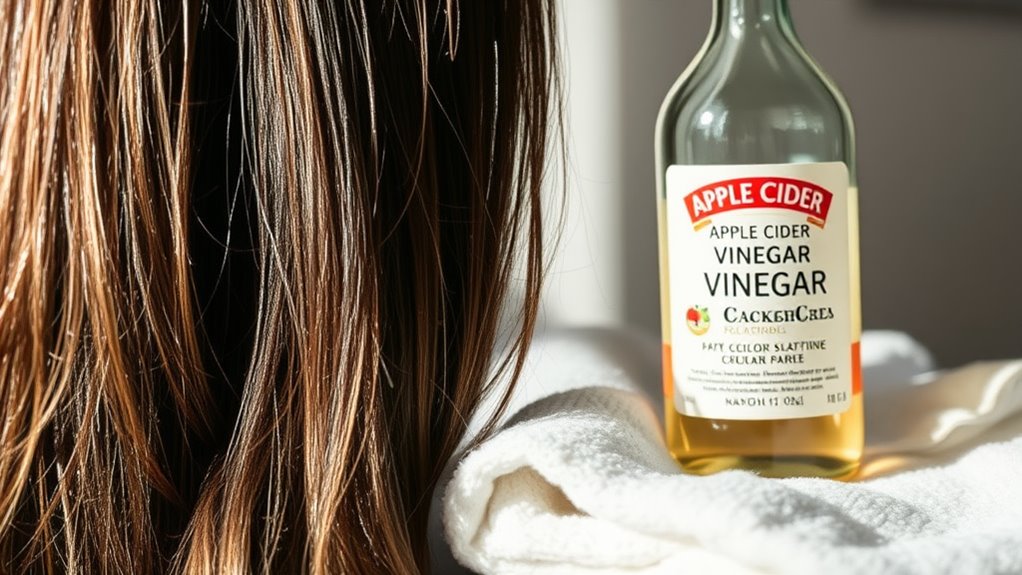Banish Oily Scalp Without Shampoo!
Just as ancient healers harnessed nature’s balance, you’re tackling oily scalp with simple remedies like diluted apple cider vinegar. It restores pH and curbs sebum, offering practical relief. Explore these methods further to uncover lasting hair health.
Key Takeaways
- Mix apple cider vinegar with water and massage into your scalp to regulate oil production.
- Apply diluted tea tree oil to your scalp twice weekly to reduce sebum and fight bacteria.
- Gently massage your scalp daily to stimulate circulation and remove excess oil.
- Incorporate omega-3-rich foods into your diet to naturally lower sebum production.
- Exfoliate your scalp weekly with baking soda to absorb oil and maintain balance.
Natural Remedies for Oily Scalp
Have you ever wondered how to tackle an oily scalp with natural remedies?
Embrace a shampoo-free oily scalp remedy using apple cider vinegar.
Mix one part vinegar with three parts water, then apply it to your scalp.
This method, backed by research, helps regulate oil glands and prevents buildup.
Massage for two minutes, let it sit for five, and rinse well.
For enhanced effects, add a teaspoon of lemon juice.
Incorporate this into your routine twice a week to maintain a healthy scalp.
Additionally, for an alternative natural remedy, consider using a dry powder treatment to absorb excess oil effectively.
Apple cider vinegar works by restoring the scalp’s pH balance, which helps control excess oil production.
Essential Oils for Scalp Balance
You select essential oils based on evidence-backed properties, such as tea tree or lavender, to target your oily scalp effectively.
Apply them using simple techniques like dilution in a carrier oil and gentle massage for maximum absorption.
This method balances your scalp’s sebum production, reducing oiliness while maintaining natural moisture. It can also promote healthy hair growth by incorporating natural ingredients from revitalizing blends.
For added effectiveness, consider adapting a DIY oil blend to incorporate soothing elements that address any underlying scalp imbalances.
Essential Oils Selection
Balancing an oily scalp starts with selecting essential oils that restore equilibrium and control excess sebum.
For evidence-based choices, you’ll want tea tree oil, proven in studies to reduce sebum and fight bacteria.
Lavender calms inflammation, peppermint regulates oil glands, and rosemary improves circulation.
Always opt for pure, certified oils from reputable sources to ensure efficacy and safety.
Application Techniques
Applying essential oils correctly maximizes their benefits for an oily scalp.
You’ll dilute them in a carrier oil like jojoba to prevent irritation and ensure safe application.
Massage the mixture gently into your scalp using circular motions with your fingertips for even distribution.
This technique enhances absorption without overwhelming the skin.
Apply the blend twice weekly, focusing on problem areas for optimal efficacy.
Balancing Scalp Effects
Essential oils offer a targeted approach to balancing scalp effects, particularly by regulating sebum production in an oily scalp.
You can harness tea tree oil’s antibacterial properties to curb excess oil, while lavender calms inflammation.
Evidence from dermatological studies supports their efficacy; dilute a few drops in a carrier oil, massage gently twice weekly, and you’ll notice balanced results without harsh chemicals.
DIY Home Treatments
You’ve got effective DIY options like clay mask treatments, vinegar hair rinses, and tea tree applications to tackle your oily scalp naturally.
These methods rely on evidence from studies showing how clay absorbs excess sebum, vinegar restores pH balance, and tea tree fights inflammation.
Start by trying these at home for practical, low-cost results. To enhance these treatments, incorporate dry shampoo powder for its instant oil-absorbing effects.
For a convenient alternative, experiment with making your own DIY dry shampoo using natural ingredients like cornstarch or clay to effectively absorb excess oil.
Clay Mask Treatment
Clay masks provide an effective, natural way to absorb excess oil from your scalp, drawing on their mineral-rich properties to detoxify and balance sebum production.
You’ll mix bentonite or kaolin clay with water or aloe vera to form a paste, then apply it evenly.
Let it sit for 10-15 minutes before rinsing.
This treatment, backed by dermatological studies, reduces oil without irritation, promoting healthier hair weekly.
Vinegar Hair Rinse
Vinegar hair rinses serve as a straightforward, natural follow-up to clay masks for tackling oily scalps.
This evidence-based method balances your scalp’s pH, reducing excess oil with minimal effort.
- Select raw apple cider vinegar for its antibacterial properties, which help control sebum.
- Dilute properly—mix one part vinegar with four parts water to avoid irritation.
- Apply evenly—pour over your scalp, massage gently, and let it sit for 2-3 minutes.
- Rinse thoroughly—use cool water to seal cuticles and enhance shine.
Tea Tree Application
Tea tree oil offers a potent, natural option for combating oily scalps in DIY treatments, thanks to its evidence-backed antimicrobial properties that target excess sebum and inflammation.
You’ll dilute it with a carrier oil like jojoba, then apply a few drops directly to your scalp using your fingertips.
Massage gently for 2-3 minutes, leave on for 30 minutes, and rinse with water.
Studies show it reduces oiliness effectively without stripping moisture, making it a practical daily addition.
Lifestyle Changes for Healthier Hair
To tackle an oily scalp without relying on shampoo, you’ll need to adopt simple lifestyle tweaks that target the root causes of excess oil.
By making these practical changes, you’ll see long-term benefits in hair health. Furthermore, if your oily scalp is accompanied by itching, trying soothing techniques can provide additional relief.
- Optimize your diet by cutting back on fried foods; research indicates this effectively reduces sebum.
- Practice stress reduction techniques like yoga, backed by studies showing lower oil production.
- Maintain a consistent exercise routine to control hormones affecting hair oil.
- Prioritize quality sleep, as experts link insufficient rest directly to increased scalp greasiness.
Moreover, incorporating natural remedies from comprehensive guides can also help address related scalp issues for healthier hair.
Quick Daily Tips
While lifestyle changes lay the groundwork for healthier hair, you can tackle an oily scalp with straightforward daily habits that deliver immediate results. Furthermore, incorporating apple cider vinegar can leverage its pH-balancing properties to maintain an optimal scalp environment.
Start by gently massaging your scalp with your fingertips each morning; it’s proven to stimulate circulation and remove excess sebum.
Use a natural astringent like diluted apple cider vinegar—it’s antibacterial and quickly balances oil.
Additionally, this remedy can also address dandruff through an apple cider vinegar rinse for better scalp health.
Avoid frequent touching; you’ll prevent oil buildup effectively.
Long-Term Maintenance Strategies
Once you’ve mastered daily habits, how can you ensure lasting control over an oily scalp?
Adopt these long-term strategies for sustained results:
- Balance your diet with omega-3-rich foods to reduce sebum production, backed by dermatological studies.
- Incorporate weekly scalp exfoliation using natural ingredients like tea tree oil for evidence-based oil control.
- Maintain hydration and stress management routines, as research links them to lower oil levels.
- Regularly monitor and adjust your regimen based on scalp observations for practical, long-term efficacy.
